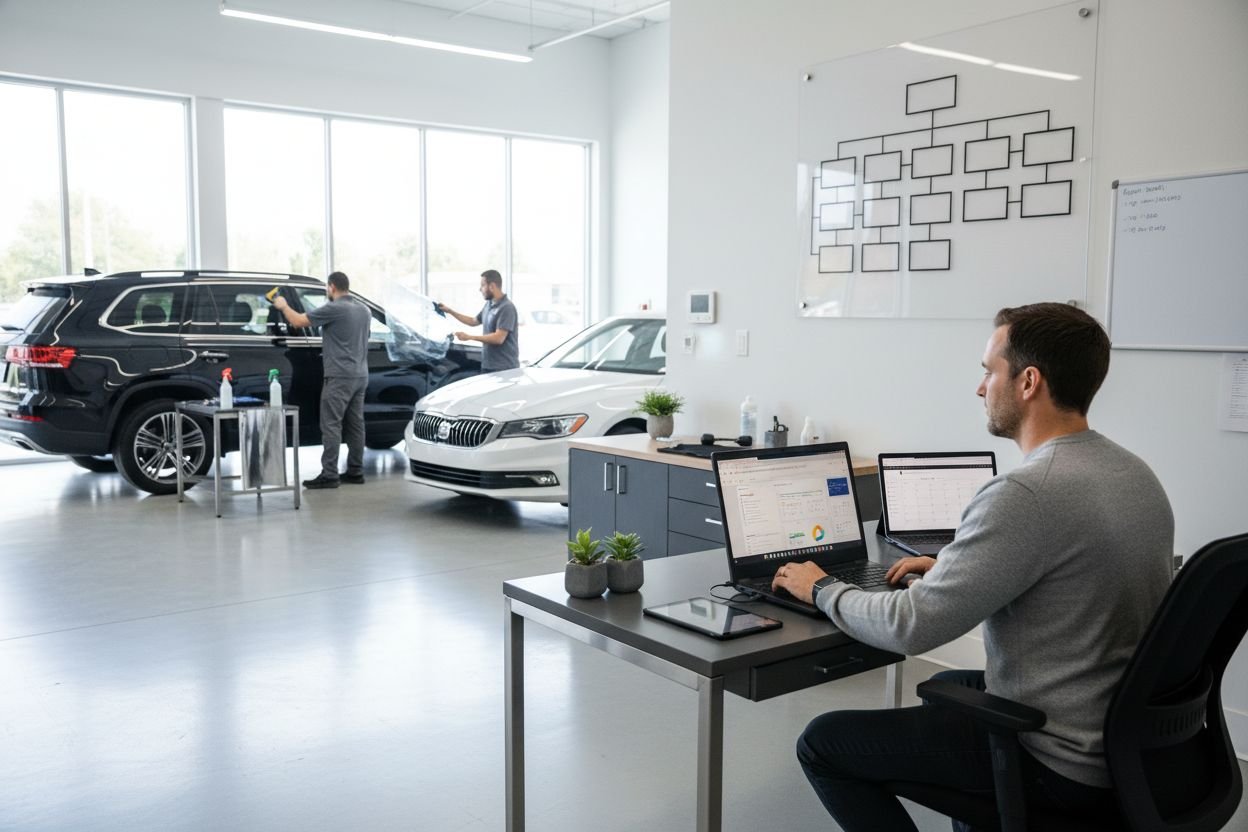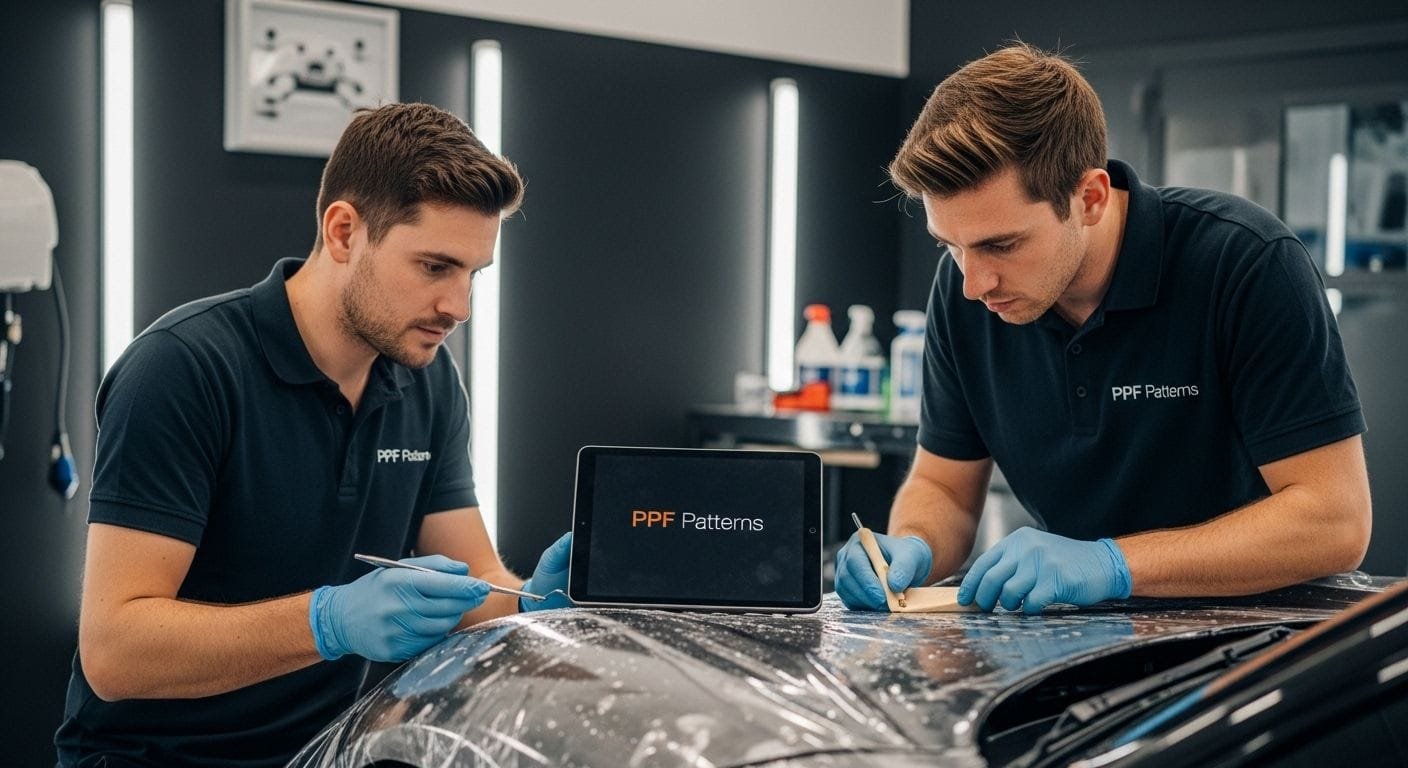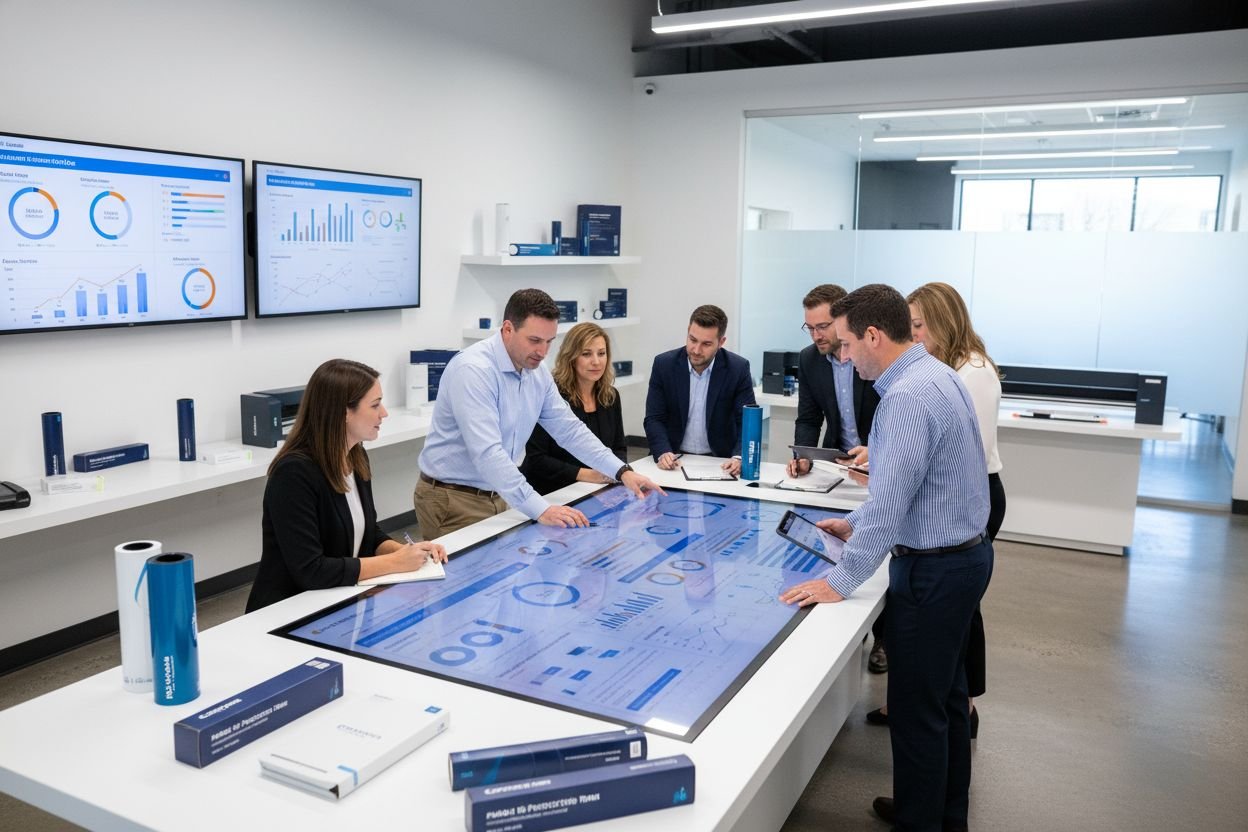Ceramic window tint is changing the way vehicles handle heat, glare, and sun damage. Some might think all window tints are roughly the same and just offer a bit of shade. Yet ceramic film filters out over 99 percent of harmful UV rays and can reduce cooling costs by up to 30 percent for businesses. This surprising level of protection is just the start and the real impact on comfort, clarity, and durability may turn a heads-down decision into a must-have upgrade.
Table of Contents
- Key Ceramic Window Tint Benefits Explained
- UV And Heat Rejection Advantages
- Boosting Business With Ceramic Tints
- Enhancing Visual Clarity And Comfort
Quick Summary
| Takeaway | Explanation |
|---|---|
| Superior Heat Rejection | Ceramic window tints reflect infrared radiation, drastically lowering cabin temperatures and enhancing energy efficiency. |
| 99% UV Protection | These tints filter out over 99% of harmful UV rays, preserving interiors and protecting passengers from skin damage. |
| Long-Lasting Durability | Unlike conventional films, ceramic tints resist discoloration and maintain performance over time, ensuring continuous protection. |
| Improved Visual Clarity | Advanced glare reduction technologies maintain visibility while reducing eye strain, enhancing driving safety and comfort. |
| Economic Client Benefits | Ceramic tints can reduce cooling costs and improve interior comfort, making them a compelling service offering for businesses. |
Key Ceramic Window Tint Benefits Explained
Ceramic window tinting represents a revolutionary advancement in automotive protection and comfort technology. These sophisticated films leverage cutting-edge nanotechnology to deliver exceptional performance far beyond traditional window treatments.
Superior Heat Rejection Technology
Ceramic window tints stand out for their remarkable heat reduction capabilities. Sandia National Laboratories research reveals that advanced ceramic films with thermochromic nanoparticles dynamically adjust to temperature changes, effectively reflecting infrared radiation. This means dramatically reduced interior temperatures and enhanced energy efficiency.
The science behind ceramic window tints is fascinating. Microscopic ceramic particles embedded within the film create a powerful barrier against solar heat. Unlike traditional metallic or dyed films, ceramic technology allows maximum heat rejection without compromising visibility or signal transmission. Vehicle owners can expect cabin temperatures to drop significantly, reducing air conditioning strain and improving overall driving comfort.
Unparalleled UV and Infrared Protection
Research from Wikipedia’s window film analysis confirms that ceramic window tints filter out over 99% of harmful ultraviolet rays. This extraordinary protection serves multiple critical purposes:
- Interior Preservation: Prevents dashboard, upholstery, and leather surfaces from fading or cracking due to prolonged sun exposure.
- Health Protection: Shields passengers from potential skin damage caused by UV radiation during driving.
- Material Integrity: Maintains the aesthetic and structural quality of vehicle interiors.
Moreover, ceramic window tints offer superior infrared blocking compared to conventional alternatives. By reflecting and absorbing infrared light, these advanced films significantly reduce heat transfer, creating a more comfortable interior environment.
Enhanced Durability and Performance
Professional installers appreciate ceramic window tints for their exceptional longevity and performance characteristics. Unlike cheaper alternatives that might discolor or degrade quickly, ceramic films maintain their protective properties and aesthetic appeal for years. Their non-metallic composition ensures no interference with electronic devices, GPS systems, or mobile phone signals.
A detailed study on automotive tint glazing highlights how advanced window tinting substantially improves vehicle comfort, particularly in regions with intense solar radiation. For professionals in the automotive customization industry, ceramic window tints represent a premium solution that delivers tangible benefits to end-users.
For professionals seeking more comprehensive insights into window tinting technologies, our detailed guide on window tint types offers an in-depth exploration of current innovations in the field.
UV and Heat Rejection Advantages
Ceramic window tints represent a sophisticated solution for vehicle owners seeking advanced protection against ultraviolet radiation and solar heat. These innovative films go beyond traditional window treatments by offering comprehensive defense mechanisms that safeguard both vehicle interiors and occupants.
Advanced Ultraviolet Protection Mechanisms
Ultraviolet radiation poses significant risks to vehicle interiors and human health. Scientific research from the World Health Organization indicates that prolonged exposure to UV rays can cause substantial damage to materials and skin. Ceramic window tints provide an exceptional barrier against these harmful rays.
The microscopic ceramic particles integrated into these advanced films create a multi-layered defense system. These particles are engineered to absorb and reflect ultraviolet radiation across different wavelength spectrums. Professional installers appreciate that ceramic tints can block up to 99.9% of harmful UV rays, which prevents:
- Interior Material Degradation: Minimizes fading and cracking of dashboard, seats, and trim components.
- Skin Protection: Reduces potential risks of skin damage and premature aging.
- Color Preservation: Maintains the original aesthetic quality of vehicle interiors.
Sophisticated Heat Rejection Technologies
Wikipedia’s comprehensive window film analysis reveals that ceramic window films can reduce energy transmission by an impressive 80 percent. This extraordinary performance stems from advanced nanotechnology that enables precise infrared radiation management.
Ceramic window tints employ unique heat rejection strategies that differ dramatically from traditional film technologies. The non-metallic ceramic particles create a complex thermal barrier that:
- Reflects infrared radiation before it enters the vehicle
- Absorbs excess thermal energy
- Prevents heat accumulation inside the cabin
Professional installers recognize that this technology translates to tangible benefits for vehicle owners. Reduced interior temperatures mean less strain on air conditioning systems, improved fuel efficiency, and enhanced driving comfort.
Performance and Long-Term Durability
Unlike conventional window films that might degrade or discolor over time, ceramic window tints maintain their performance characteristics. Research from automotive technology experts demonstrates that high-quality ceramic films offer consistent protection and aesthetic appeal throughout their lifecycle.
The non-metallic composition of ceramic window tints ensures additional advantages:
- No interference with electronic signals
- Consistent heat and UV rejection
- Resistance to bubbling, peeling, and discoloration
For automotive professionals seeking deeper insights into window tinting technologies, our comprehensive guide to window tint types provides extensive technical details and industry best practices.
To help clarify the differences between ceramic and traditional window tints, the following table summarises the main features mentioned in this section:
| Feature | Ceramic Window Tint | Traditional (Dyed/Metallic) Tint |
|---|---|---|
| UV Rejection | Over 99% | Up to ~90% |
| Infrared Heat Rejection | High (80% or more) | Moderate to Low |
| Signal Interference | None | Possible with metallic films |
| Durability | Outstanding, resists discolouring | May fade, degrade or bubble |
| Visible Light Transmission | Adjustable, high clarity | May reduce clarity at high opacity |
| Interior Protection | Excellent | Moderate |
| Glare Reduction | Up to 90% | Varies (often less effective) |
Boosting Business with Ceramic Tints
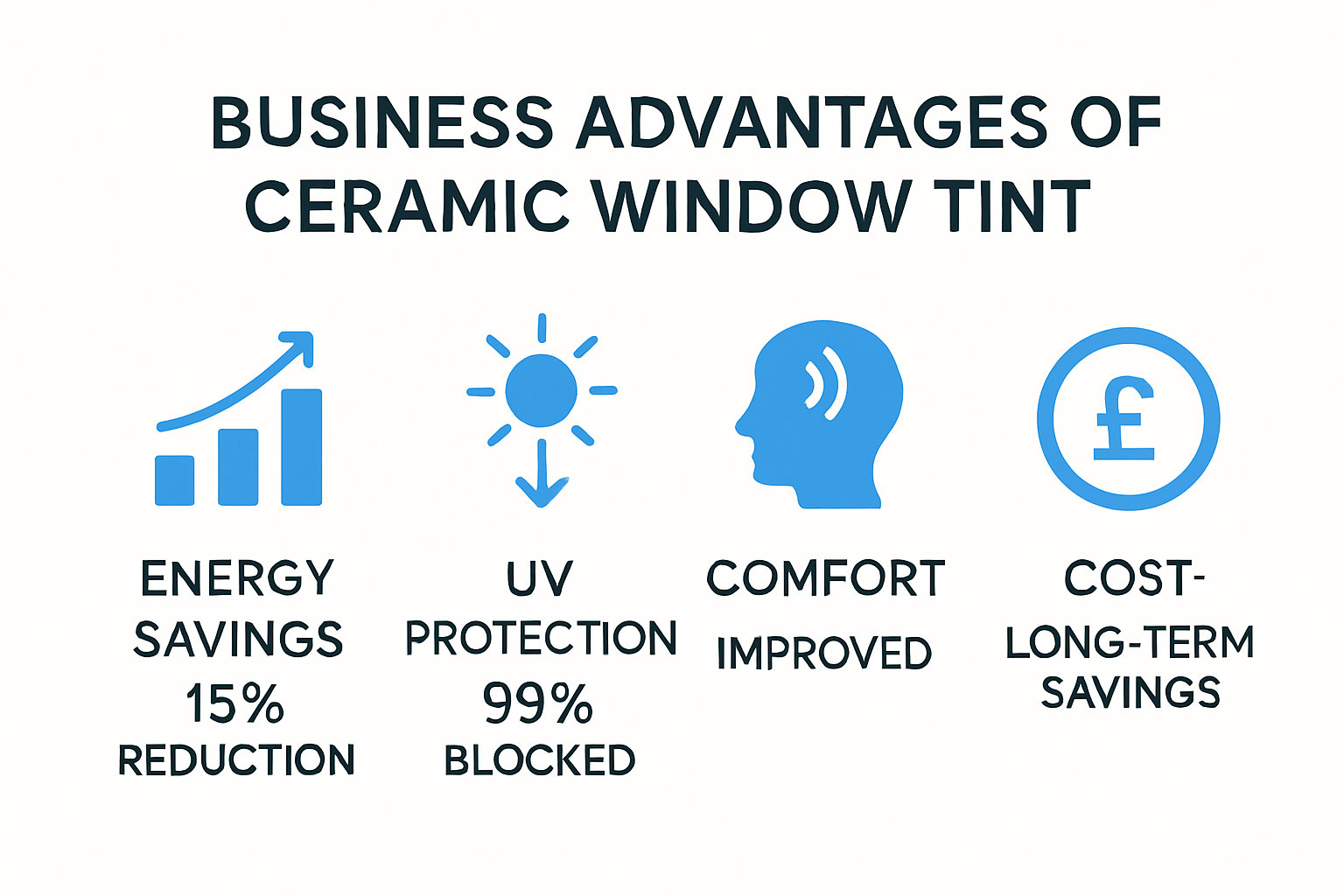
Ceramic window tints represent more than just a vehicle enhancement technology they are a strategic business investment for automotive professionals and commercial enterprises seeking to elevate their service offerings and operational efficiency.
Enhanced Client Value Proposition
According to the International Window Film Association, window films can reduce solar heat gain by up to 79% and lower cooling costs by as much as 30%. This remarkable statistic transforms ceramic window tints from a simple aesthetic upgrade to a compelling economic solution for businesses.
Professional installers can leverage these performance metrics to create powerful marketing narratives. By demonstrating tangible benefits like energy savings, interior protection, and improved comfort, businesses can position ceramic window tints as a premium service that delivers measurable value to clients. The advanced nanotechnology embedded in ceramic films represents a significant technological leap that sets forward-thinking businesses apart from traditional competitors.
Diversifying Service Offerings
Commercial window tinting research reveals that window tints enhance the aesthetic appeal of buildings, creating a sleek and professional appearance that attracts clients and customers. For automotive and window film professionals, this translates into a robust opportunity to diversify service portfolios.
By incorporating ceramic window tint installations into their service menu, businesses can:
- Expand Revenue Streams: Offer high-margin services with superior technological features
- Attract Premium Clients: Position the business as a cutting-edge, technologically advanced provider
- Differentiate from Competitors: Provide solutions that go beyond standard window tinting
To help professionals understand the intricacies of these advanced technologies, our comprehensive guide on window tint technologies offers in-depth insights into emerging trends and installation techniques.
Productivity and Workplace Enhancement
Workplace environment studies demonstrate that window tinting creates more conducive work environments by reducing glare and temperature fluctuations. This directly translates to enhanced employee morale and productivity.
For businesses in automotive customization, this means positioning ceramic window tints not just as a product, but as a comprehensive solution that addresses multiple client needs:
- Reduced energy consumption
- Enhanced interior comfort
- Protection against UV radiation
- Improved aesthetic appeal
The economic and functional benefits of ceramic window tints extend far beyond simple cosmetic improvements. They represent a sophisticated technological solution that addresses real-world challenges in vehicle and building environments.
Professionals looking to stay ahead of industry trends should recognize ceramic window tints as more than a product they are a strategic business investment that offers significant competitive advantages.
The following table organises the key business-related advantages and their impact, as highlighted in this section:
| Business Benefit | Description / Impact |
|---|---|
| Cooling Cost Reduction | Up to 30% savings on energy costs |
| Enhanced Building Aesthetics | Sleek, professional appearance |
| Expanded Service Offerings | High-margin, premium services attract more clients |
| Workplace Productivity | Less glare and temperature fluctuation, happier staff |
| Premium Client Attraction | Technological edge attracts businesses & high-end clients |
| Differentiation from Competitors | Advanced tech offers unique selling proposition |
Enhancing Visual Clarity and Comfort
Ceramic window tints represent a sophisticated solution for professionals seeking to optimize visual experiences while maintaining superior optical performance. These advanced films go beyond traditional tinting technologies, delivering unprecedented clarity and comfort for vehicle occupants.
Advanced Glare Reduction Technologies
Research indicates that ceramic window films can reduce glare by up to 90% without compromising visibility. This extraordinary capability ensures drivers maintain optimal visual acuity while eliminating harsh, eye-straining brightness.
The microscopic ceramic particles integrated into these films create a precise light management system. Unlike traditional tints that might darken windows excessively, ceramic technologies provide nuanced light control. Professional installers appreciate how these films strike a delicate balance between sun protection and visual transparency, ensuring drivers can navigate challenging light conditions with confidence.
Optimized Light Transmission Dynamics
Nano-ceramic technology research reveals remarkable light transmission capabilities. Ceramic tints can achieve Visible Light Transmission (VLT) levels around 70%, which means approximately 70% of natural light passes through while simultaneously blocking substantial heat.
This sophisticated approach to light management provides multiple benefits:
- Consistent Visibility: Maintains clear vision during day and night driving
- Thermal Comfort: Reduces interior heat without sacrificing natural illumination
- Eye Protection: Minimizes eye strain from excessive brightness
For automotive professionals seeking deeper understanding of these technologies, our comprehensive window tint guide offers extensive insights into emerging tinting techniques.
Comprehensive Comfort Engineering
Window tinting experts emphasize that ceramic window tints provide more than visual benefits they engineer comprehensive comfort environments. By strategically managing light and thermal energy, these films transform interior spaces into precisely controlled microclimates.
Professional installers recognize that ceramic window tints represent a holistic solution addressing multiple sensory experiences:
- Minimized visual discomfort
- Reduced thermal stress
- Enhanced driving ergonomics
- Consistent environmental control
The precision engineering behind ceramic window tints demonstrates how advanced materials science can dramatically improve human comfort. By leveraging nanotechnology, these films offer a level of performance that traditional window treatments cannot match.
For automotive and architectural professionals, ceramic window tints are not merely an aesthetic choice but a sophisticated technological intervention designed to optimize human visual and thermal experiences.
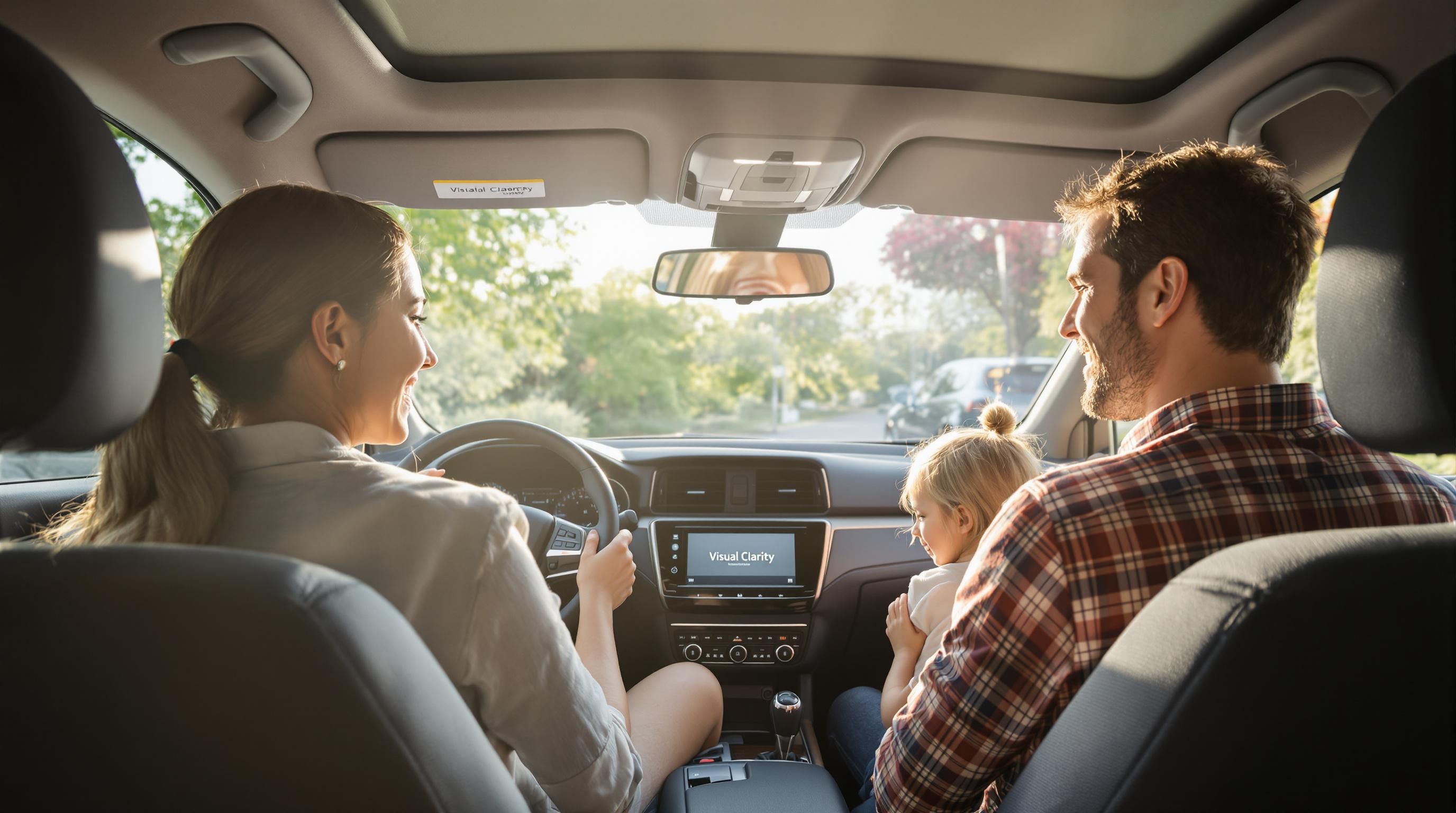
Frequently Asked Questions
What are the main benefits of ceramic window tint?
Ceramic window tint offers superior heat rejection, blocks over 99% of harmful UV rays, enhances durability, improves visual clarity, and can reduce cooling costs by up to 30%.
How does ceramic window tint provide UV protection?
Ceramic window tinting incorporates microscopic ceramic particles that filter out over 99% of UV rays, protecting both vehicle interiors and passengers from skin damage.
Is ceramic window tint durable compared to traditional films?
Yes, ceramic window tints are more durable than traditional films. They resist discolouration, peeling, and bubbling, maintaining their protective qualities for years.
Can ceramic window tint improve comfort while driving?
Absolutely. Ceramic window tint reduces glare by up to 90%, enhances light transmission, and helps maintain a comfortable cabin temperature, contributing to a safer and more enjoyable driving experience.
Unlock the Full Potential of Ceramic Window Tint with Precision Tools
Struggling with precision, material waste, or the challenge of maintaining the flawless performance of ceramic window tint? Even as you discover the advanced benefits of ceramic films—such as outstanding heat rejection and superior UV protection—the secret to maximising these advantages lies in expert installation. Whether you are a professional installer or a passionate car enthusiast, using the right cutting technology ensures every job looks sharp and lasts longer. Explore our specialised window tint tools and software built specifically for the needs highlighted in this guide.
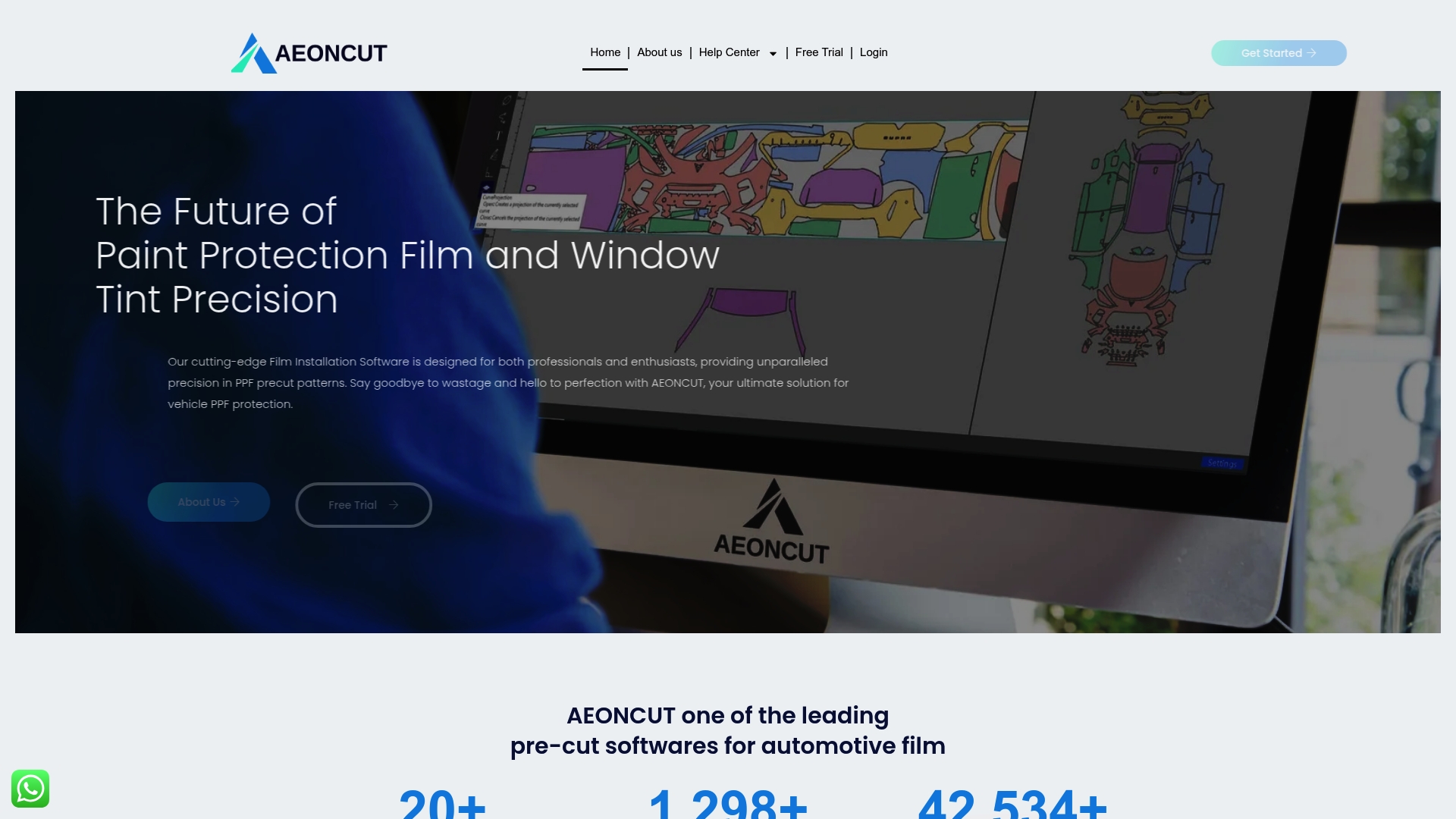
Do not settle for guesswork. Elevate every ceramic window tint application with the high-tech, cloud-based solutions from AEONCUT. Experience ultra-accurate pre-cut patterns, minimal waste, and a faster workflow. Visit our window tint software page or our homepage to start your professional upgrade today and deliver results your customers will notice straight away.
Recommended
- Types of Window Tint: Guide for Installers and Dealers 2025 – AEONCUT PPF Pre-cut Cutting software
- What is Window Tint? Essential Guide for Tinting Pros 2025 – AEONCUT PPF Pre-cut Cutting software
- How Window Tint Works: Essential Guide for Auto Professionals 2025 – AEONCUT PPF Pre-cut Cutting software
- 2025 Guide to Window Tint Colour Options for Industry Pros – AEONCUT PPF Pre-cut Cutting software


